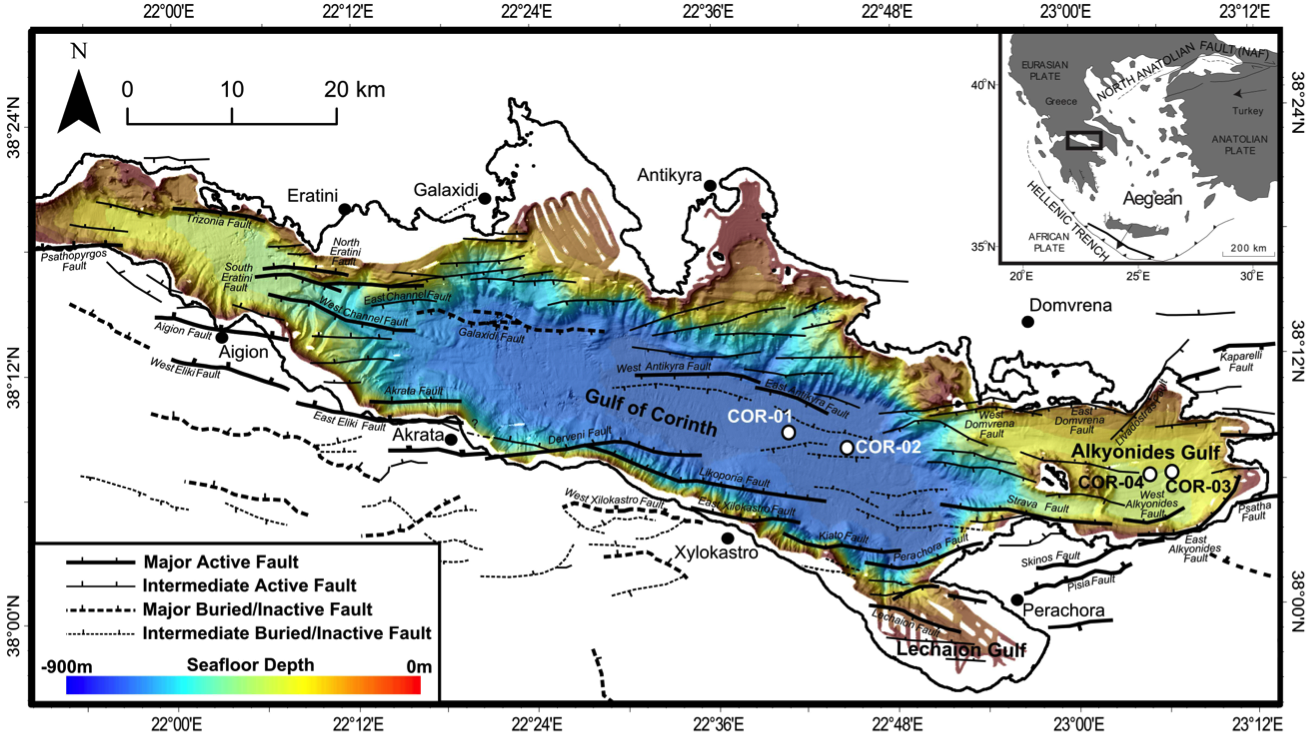Southampton Geologists and Geophysicists, along with colleagues in the UK, Greece, the rest of Europe and the US, have been working in the active Corinth rift in Greece for the last 10-15 years – this is one of the most seismically active areas of Europe and one of the most rapidly extending regions on Earth. The area is undergoing the earliest stages of rifting of the continent – major faults accommodate extension and generate regular magnitude 6+ earthquakes. Historically the region has experienced many destructive earthquakes that have destroyed Greek Classical cities, possibly generated the source of the Atlantis legend, and provided the setting for the spectacular Delphi Oracle site.
In the last decade this team have been collecting and integrating marine geophysical data to image the extensional faults and the recent stratigraphic sequence – recording the fault and rift development at very high resolution. A Natural Environment Research Council (NERC) funded project has funded postdoc Casey Nixon to integrate all existing seismic reflection data for the first time – > 5000 km of profiles. The missing piece of the jigsaw has been concrete information on the absolute age of these sediments and information on the changing depositional environment. Absolute age of the sediments will allow well constrained fault slip rates to be calculated (to determine their earthquake potential) as well as rates of extension and change of rift structure through time. The only way to gather this information is by drilling and sampling the sequence.
Image: The active Corinth rift showing faults mapped from seismic data offshore and from onshore fieldwork, and the proposed IODP drill sites (COR-01 to -04) to collect Quaternary sediments, from ~2 million years old to present, deposited in the rift as fault movement creates large basins. Figure from Nixon et al. (in prep) and Bell et al., 2009.
A workshop was held in Athens in 2014 to bring together rift scientists from around the world to discuss and prepare a proposal to drill to the International Ocean Discovery Program (IODP). The meeting was really successful, and even involved breakout groups on the beach looking out onto the Saronic Gulf – a perfect environment for brainstorming! After several months of hard work, the proposal was pulled together and submitted to IODP, led by Lisa McNeill in Southampton. This proposal received excellent internal reviews and is now being externally reviewed. Watch this space to find out if and when this unique rift system will be drilled!
Written by Lisa McNeill
